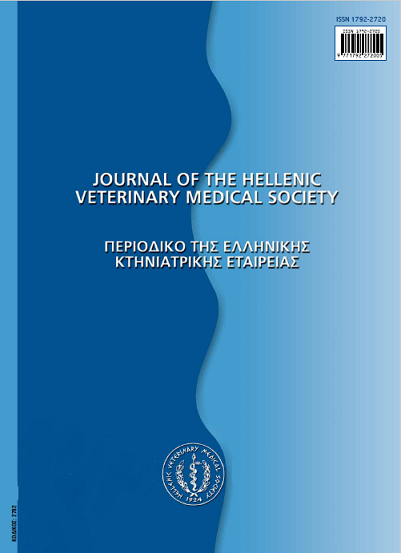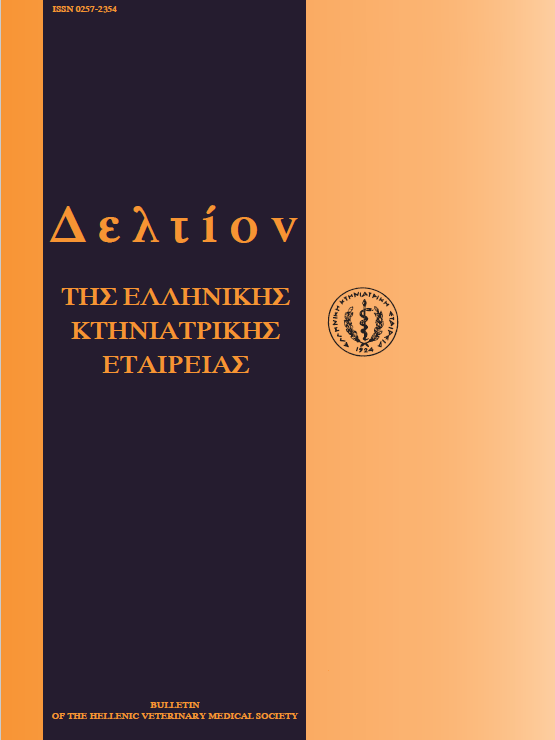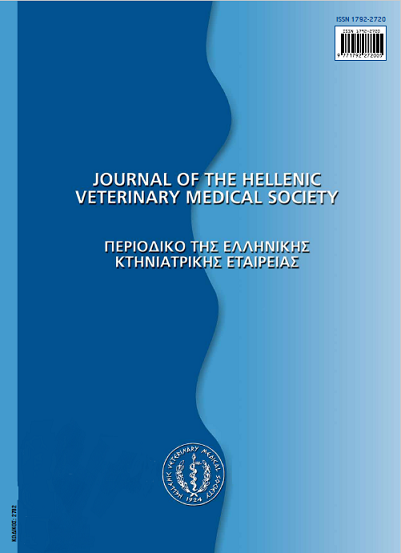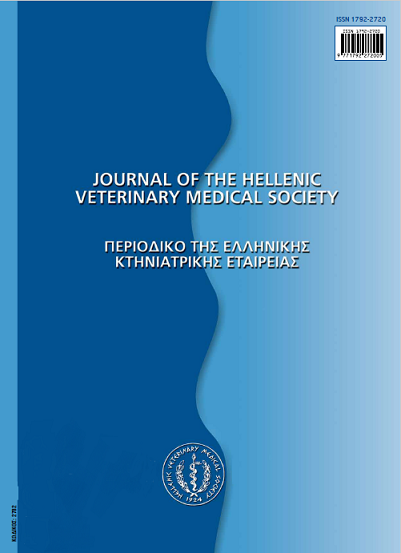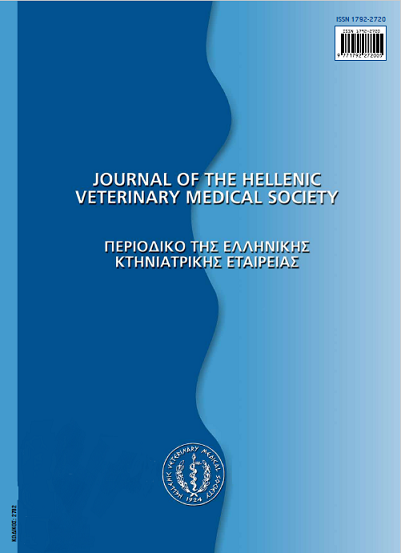Cardiac tamponade secondary to hemorrhagic pericardial effiision in five dogs

Abstract
A 7-year old female collie (case 1), a 3-year old male Caucasian-cross (case 2) and three male German shepherds with an age of 11 (case 3), 8.5 (case 4) and 10 (case 5) years, respectively, were admitted with a history of decreased appetite, depression, exercise intolerance, dyspnea and progressive abdominal enlargement, for the last 10 to 60 days. Poor body condition (5/5), muffled heart sounds (5/5), weak femoral pulse (5/5), ascites (5/5), inspiratory or inspiratory-expiratory dyspnea (5/5), pulsus paradoxus (2/5) and jugular vein distension (2/5) were the prominent clinical findings, while mature neutrophilic leukocytosis (3/5), lymphopenia (3/5), eosinopenia (3/5), hypoproteinemia (5/5) and increased urea nitrogen (3/5) were the most prevalent clinicopathologic abnormalities. Apart from a space-occupying lesion onto the right atrial wall of one dog (case 4), radiographic and ultrasound examination showed a globe-shaped cardiac silhouette (5/5), pericardial effusion (5/5), ascites (5/5) and pleural effusion (4/5). A large amount of non-clotting hemorrhagic effusion was drained during pericardiocentesis, resulting in rapid clinical recovery. Physical, chemical and cytological evaluation of the pericardial fluid was non-contributory in the differentiation between neoplastic and non-neoplastic causes of these effusions. Case 3 died 25 days post-pericardiocentesis; right atrium hemangiosarcoma and pulmonary metastases were documented on post mortem histopathological examination. Another dog (case 5) died of unknown causes one month after pericardiocentensis. On the contrary, dogs 1, 2 and 4 were still clinically healthy for a followup period of 16, 2 and 8 months, respectively.
Article Details
- How to Cite
-
HATZIGIANNAKIS (Χ.Γ. ΧΑΤΖΗΓΙΑΝΝΑΚΗΣ) C. G., MYLONAKIS (Μ. Ε. ΜΥΛΩΝΑΚΗΣ) M. E., SARIDOMICHELAKIS (Μ.Ν. ΣΑΡΙΔΟΜΙΧΕΛΑΚΗΣ) M. N., PATSIKAS (Μ. ΠΑΤΣΙΚΑΣ) M., PSALLA (Δ. ΨΑΛΛΑ) D., & KOUTINAS (Α.Φ. ΚΟΥΤΙΝΑΣ) A. F. (2017). Cardiac tamponade secondary to hemorrhagic pericardial effiision in five dogs. Journal of the Hellenic Veterinary Medical Society, 56(1), 9–19. https://doi.org/10.12681/jhvms.15064
- Issue
- Vol. 56 No. 1 (2005)
- Section
- Research Articles
Authors who publish with this journal agree to the following terms:
· Authors retain copyright and grant the journal right of first publication with the work simultaneously licensed under a Creative Commons Attribution Non-Commercial License that allows others to share the work with an acknowledgement of the work's authorship and initial publication in this journal.
· Authors are able to enter into separate, additional contractual arrangements for the non-exclusive distribution of the journal's published version of the work (e.g. post it to an institutional repository or publish it in a book), with an acknowledgement of its initial publication in this journal.
· Authors are permitted and encouraged to post their work online (preferably in institutional repositories or on their website) prior to and during the submission process, as it can lead to productive exchanges, as well as earlier and greater citation of published work.



